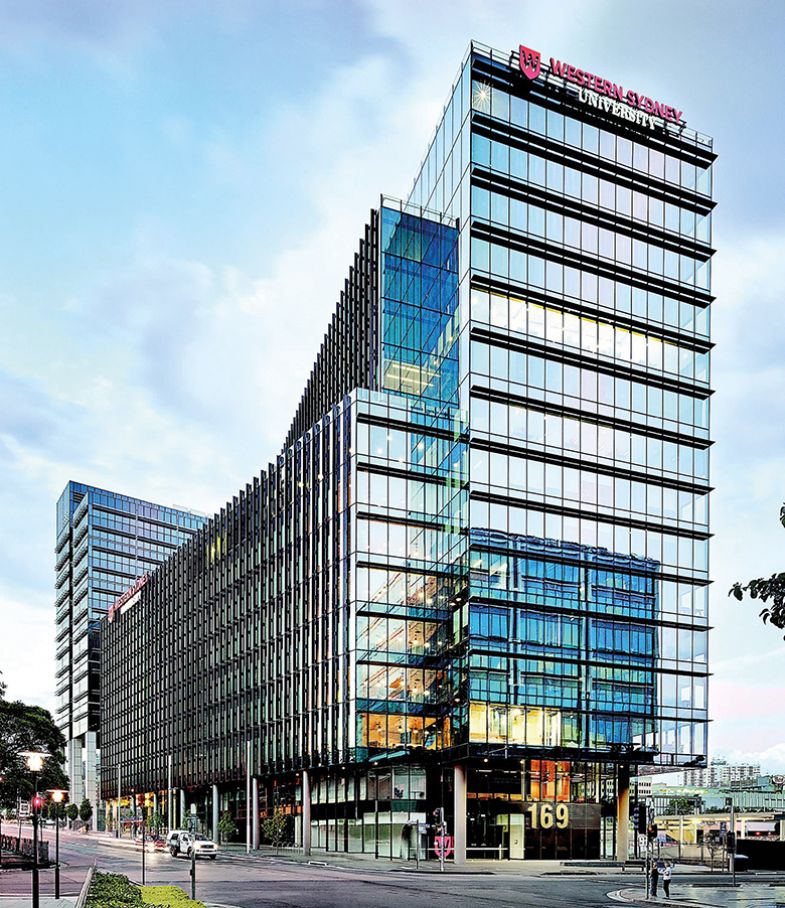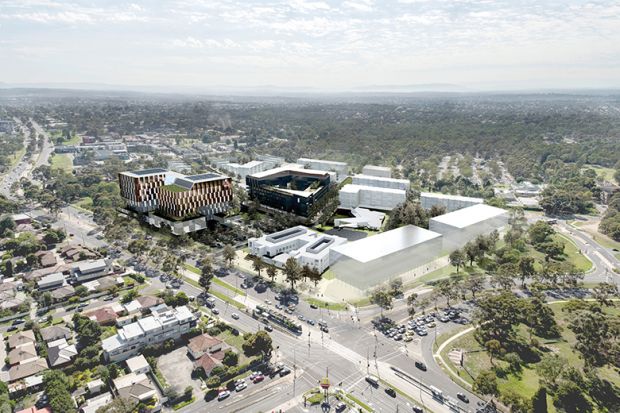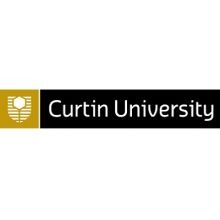For a sector crippled by funding cuts, Australia’s universities sure build a lot. The country’s big city campuses boast more scaffolding than a medieval European cathedral project. Cranes tower like metallic beanstalks. Football field-sized holes in the ground next door foretell whole new metro stations.
The University of Sydney, for instance, recently opened a gleaming administration building and student accommodation block, and is busy constructing new homes for its faculties of health and arts and its School of Life and Environmental Sciences. It is also constructing a new museum to house its antiquities, natural history collection and 8,000-plus artworks; part of the funding was provided by the same Chinese-Australian philanthropist who also co-funded a new business school at the nearby University of Technology Sydney. The latter, designed by prominent US architect Frank Gehry, is one of four recent major construction projects at UTS.
Across town at UNSW Sydney, cranes that hovered for years over two new biological sciences buildings have finally been lowered. But earth-moving equipment is rumbling across the road at the Randwick Health and Education Precinct, where an entire block of homes has been levelled to make way for the university’s A$2 billion (£1.1 billion) joint venture with the New South Wales health department – the biggest estate development in UNSW’s 70-year history.
Similarly disruptive changes are afoot at the University of Melbourne, where the Grattan Street artery has been closed for the construction of a new underground railway station. To celebrate, the university is plonking an entire city block of student services and cultural facilities on the station’s doorstep, with building to start next year.
And, not to be outdone, the Australian National University in Canberra launched its Kambri cultural precinct in February. The A$260 million redevelopment features a concert venue, cinema, pool, gym, supermarket, bars and a cultural centre featuring a huge mural by legendary Australian painter Sidney Nolan. It’s a taste of things to come; in August, the ANU unveiled its new masterplan, vowing to restructure its entire campus over the next 20 years. “Piecemeal change will not achieve the university’s goals,” the report proclaims.
Much of this campus construction craze has been bankrolled by international students, who collectively spent A$37.7 billion last financial year alone on living expenses and tuition fees in Australia. Last year, the 10 Australian universities with the highest foreign student earnings – including the five mentioned above – collectively amassed A$6.1 billion from international students, up from A$5.2 billion in 2017. This amounts to 65 per cent of all the fees that foreign students paid to Australia’s 37 public universities. The other third of the international spoils are fought over by the remaining three-quarters of the sector. But with the average operating margin at Australian universities last year a trim 3.1 per cent (down from 4.5 per cent in 2017), the realisation of their ambitions for campus development requires a little more creativity.
The obvious plan B incorporates industry partnerships, research commercialisation and philanthropy. The problem is that the universities that monopolise international recruitment also tend to dominate these other sources of non-government revenue. Sydney, Melbourne, Queensland, UNSW and Monash universities – all big earners from overseas students – have achieved or are well on the way to achieving fundraising campaign targets of between A$500 million and A$1 billion each.
Newer, suburban-based universities like Western Sydney University (WSU) and Melbourne’s La Trobe – each of which attracted less than 2 per cent of the fees foreign students paid to Australian universities last year – dream in much smaller numbers. La Trobe has a target to raise A$100 million in philanthropic support by 2022, while WSU is seeking A$30 million for scholarships and a similar amount for a complementary medicine institute. Still, WSU vice-chancellor Barney Glover has a cunning plan to close the wealth gap. “I think we can do it,” he enthuses.
The secret sauce, he reveals, is to leverage something that his institution – like other universities around Australia – has in spades: land. Under an initiative called “Western Growth”, WSU is rethinking the network of outer metropolitan campuses gifted to its predecessor institutions, mostly in the 1970s and 1980s, selling off sites in out-of-the-way places while acquiring high-rise campuses in urban business hubs.
“We’re looking at how we develop campuses close to transport, business and industry in a rapidly developing region like western Sydney. It’s an interesting reset on the idea of a campus in the 21st century,” Glover says.
First cab off the rank was WSU’s vertical campus in Parramatta, considered the geographic centre of Sydney’s sprawling metropolis. The campus, which opened in 2017, is in a 14-storey building owned by property group Charter Hall. The university occupies 10 floors and sub-leases others to professional services firm PricewaterhouseCoopers, among other tenants. “It’s a good co-location model,” Glover says. “We’re moving away from owning infrastructure to leasing infrastructure.”
WSU has opened another high-rise campus in the outer metropolitan hub of Liverpool, leasing it from a legal firm, and plans to erect a third vertical campus in what Glover says will be “our biggest ever build”. The 18-storey, A$300 million building in Bankstown will perch between the municipal headquarters on one side and the city library on the other, on council-owned land currently used as a car park. Under plans still being finalised, the council will let the land to the university for a peppercorn rent and receive retail and car parking space in return.
The university has also teamed up with Charter Hall to jointly finance and develop an engineering innovation hub in Parramatta, which will be shared with UNSW. It also plans to join a science-focused “multiversity” shared with UNSW and the universities of Newcastle and Wollongong. The project will be part of the Western Sydney Aerotropolis near Badgerys Creek - the site of Sydney’s second international airport, now under construction after being mooted for decades - while WSU is also developing a nearby site it owns for housing and commerce.
To help bankroll all its plans, WSU is selling or redeveloping another six campuses, mostly located far from transport and services. One campus, at Campbelltown in Sydney’s far south-west, a 1.2 square kilometre site has been subdivided into 950 residential allotments and sold to developers. Another, at Werrington North in the city’s far west, is also likely to be given over to housing. Across the road, the Werrington South site is being redeveloped into a shopping centre which will be owned by WSU and managed by the Kaiparra Property Group, generating “quite a bit of revenue for the university”, Glover says.
Part of WSU’s Westmead site in Parramatta was sold for housing in 2015, with the rest to be redeveloped into an innovation precinct focused on health research and education – again, in a joint development with Charter Hall. The university has committed to occupy about half of the space, with the rest going to commercial tenants along with shops, a fitness centre, childcare and car parking. The university is still considering what to do with two other sites at Milperra and Parramatta North.
Glover says the motivation behind all this is to better locate students, staff and researchers, as well as generating money. “Our students love being next to transport connectivity, shopping, cafes, bars and – importantly – businesses for internships and placements,” he says.
He estimates that by the end of the year, the developments will also have furnished WSU with an endowment of A$400 million, the earnings on which can be invested in new facilities, teaching and research. In five years, he predicts, this “corpus” will have grown to A$1 billion. “It future-proofs the infrastructure,” he says. “It’s giving us a revenue stream that is not reliant on the commonwealth.”

Not everyone is comfortable with Australian universities throwing themselves so whole-heartedly into property development. According to Alison Barnes, president of the National Tertiary Education Union, “universities should concentrate on their core responsibilities of teaching, research and community services. [They] are not in the business of property speculation or undertaking risky business ventures. In too many cases, so-called entrepreneurial activities are a distraction…and a real drain on already stretched resources – and, therefore, act to limit rather than enhance their core responsibilities.”
Barnes, a former senior lecturer in the School of Management at Sydney’s Macquarie University, says universities should be engaged in commercial activities like providing aged care and healthcare only “where it can be clearly demonstrated that there are direct educational or research benefits to the university, or where guaranteed profits from such activities are directly invested into teaching, research or community services”.
Natalie MacDonald, vice-president for strategy and development at La Trobe, says that she is “very conscious” of such arguments, and keeps a copy of the university act on her desk so that she can remind herself of its objects as she oversees its University City of the Future project, a A$5 billion development of its north Melbourne campus into whose funding the university is currently carrying out a feasibility study.
The project revolves around a research and innovation precinct and health and well-being hub featuring an expanded private hospital and, eventually, aged care, childcare and comprehensive clinical facilities. Also envisaged are housing for 12,000 people, along with commercial, retail and cultural facilities and a A$150 million sports park.
A new train station, part of a massive rail upgrade pledged by the state government last year, provides an added sweetener.
But MacDonald dismisses any suggestion of mission drift, insisting that the development is “grounded” in the university’s objects. “We can create a city here that provides economic, social and community benefit. And we can do it in ways that further the interests of the university,” she says.
“The university in the modern day is here to provide excellent education – in safe and vibrant environments – that is linked to good work prospects, and to solve real-world industry problems as well as conduct pure research. We’re creating deep and lasting relationships with industry, an environment for our students that is integrally linked to work opportunities and a community that’s vibrant and interesting.”
If people come to La Trobe with investment proposals that “don’t contribute to that in some way, we’re far more reticent to engage”, she adds. And she says the risks in ventures of this sort are just a variation on the risks universities have faced for centuries.
“If you come back to the desire being expressed by both industry and government – for universities to be more connected to industry and innovation, turning out graduates who are work ready – then I would argue that it’s a risk not to do this kind of thing.”
Moreover, if universities accept that they have a role in stimulating economic activity and creating “social uplift” in their regions, they must adopt a different use of their valuable land in cities like Melbourne and Sydney, which are “bursting at the seams”.
“We don’t have to do this,” she says. “As an institution, we could just sit on our land and wait for the adjoining area to grow up around us. But we don’t think that’s the right thing to do. Education, work experience and innovation can be much stronger if we play a pivotal part in being the catalyst.”
But, of course, the development projects will also contribute to La Trobe’s long-term financial sustainability by creating “a diversity of income streams. We might get income from the underlying ground lease. We might do joint ventures where we hold the land, [investors] develop it and we share a profit. Or we might build ourselves and just rent it out. It’s such a big site that you need a mix of those things.”
Revenue from commercial deals can help fund infrastructure in the planned research and innovation precinct, she says. Some parcels of land might be developed through partnerships with “a venture capitalist, a superannuation fund, a major developer or a combination of all three. We’re looking at the pros and cons of these things. The con is that there is a loss of control, so you’ve got to go into it with your eyes open and make sure you’re not compromising the longer-term objectives.”

Other universities across Australia – all of them based in the suburbs rather than metropolitan city centres – are embracing somewhat similar plans, not necessarily offloading their land but leveraging its innate value.
Perth’s biggest university, Curtin, has chosen a private partner to execute a A$300 million development in its main campus in the suburb of Bentley. The “Exchange” precinct will feature accommodation for 1,000 students, a hotel run by Waldorf Australia, 38 apartments, commercial space and 15 speciality shops.
“We’re seeking to transform a traditional campus into an industry-connected innovation precinct,” explains Deborah Terry, Curtin’s vice-chancellor. “It’s part of where universities in Australia will increasingly go. There’s recognition of a need to diversify our economies and ensure they’re resilient into the future, and universities are a critically important part of that.”
She says the campus, the site of a pine plantation destroyed in a 1957 fire, has so much space that Curtin often runs buses to ferry people between its facilities and the technology park and supercomputer across the road. Exchange is “how we bring more of this activity together”, Terry says. “We invite community and industry on to our space rather than next door.”
The project is being funded via what Terry describes as a “hybrid private-public partnership”. A consortium led by InfraRed Capital Partners has been contracted to design, finance, construct and operate the development for 35 years, after which the ownership reverts to the university. “Without having to borrow funds or draw down on our reserves, we’re able to create the environment that we think we need to flourish into the future,” Terry says.
The arrangement is similar to a deal the University of Oxford struck earlier this year with the UK’s biggest investment manager, Legal & General, to build thousands of homes and two science parks (including commercial space) on university-owned land on sites around what is often described as the UK’s least affordable city. Under the agreement, Legal & General will fund the £4 billion construction project over 10 years and then collect rent on the buildings for 60 years before gifting them back to the university.
The University of Cambridge, for its part, is building 5,000 homes in its similarly overcrowded city, mainly for staff and postgraduates, financed via a £350 million bond issued in 2012. More controversial, however, was a further £600 million bond issue announced last year to finance “revenue-generating projects and other facilities”, such as retail developments, commercial research facilities, a hotel refurbishment and the next stage of the housing development.
Two members of Cambridge’s council signed a “note of dissent” expressing concern about the plan. The note observed that the housing development’s first phase was two years late and £100m over budget. One of the signatories, Ross Anderson, professor of security engineering at Cambridge, told Times Higher Education: “The question here is, quite simply, ‘Should we back the university as a property developer?’ The answer, from experience, is ‘No more than we have to’.”
But it is not only in Australia and the UK that universities are engaging in property developments with commercial elements. Hong Kong Polytechnic University (PolyU), for instance, has found a way of furthering its educational interests while turning a buck. In 2011, it harnessed internal resources and a loan to convert on-site staff quarters near the Kowloon waterfront into one of the territory’s most upmarket hotels.
As a separate legal entity fully owned by the university, Hotel ICON is staffed by professionals and run on a commercial basis. But it also has an education and research mandate, providing internships for about 60 PolyU students and more from overseas. Three rooms are set aside for research and the hotel offers an elite management programme, with teaching provided by senior executives: “It’s part of the job description,” says Miranda Lou, PolyU executive vice-president.
PolyU defused initial local hostility to the project by setting its room rates higher than neighbouring hotels so that it did not undercut them. Opposition has now evaporated, Lou says, with hotel operators grateful for the steady supply of hospitality graduates, research and executive training opportunities.
Meanwhile, with the loan now paid off, profits not needed for hotel operations or upgrades are ploughed back into the university. “From PolyU’s perspective it will be a regular revenue stream,” Lou says.
Meanwhile, Japanese education professor Hiroshi Ota tried to orchestrate something similar at Hitotsubashi University’s sprawling campus in Tokyo’s west. He conceived a plan for a 10-storey building in an unused corner of the campus. Retail would have occupied the bottom floors, with others earmarked for a “high-end nursing home” and the upper floors for student accommodation.
The project would have generated revenue for the university – much needed amid Japan’s demographic squeeze – and addressed the housing needs of students and ageing Tokyo residents who want to downsize. Ota says it would also have had an educational function, as older residents shared lifetime insights with the students from the floors above – an idea rooted in his experience as a graduate student in the US, where the “kind” senior residents in his apartment block taught him many things about American society and business etiquette: “They never charged money: they were just happy to talk to young people.”
The proposal was vetoed by university officials, however. “The problem is the mindset. The old guard don’t want to change anything,” he says. But that cannot last, as Japan’s education ministry becomes increasingly frustrated that the national universities are not making full use of the autonomy granted in 2004 reforms. “Change is coming soon, I would say,” Ota predicts.
Back in Australia, universities continue to make full use of their financial autonomy from a government that has recently ended the uncapped recruitment of domestic undergraduates and borne down on research and capital funding.
Another example is Flinders University. In June, the Adelaide institution lodged a call for co-investors in what it says will be the biggest integrated health and education precinct in South Australia. The university plans to establish a new urban centre in its Bedford Park campus in the city’s south, featuring a town square, health research building, “boutique” shopping centre and hotel, as well as a new train station, due to open in 2020.
“We have enormous amounts of land,” says vice-chancellor Colin Stirling. “And it’s enormously under-utilised. We’re going to make better use of what has been a relatively lazy asset.”
Other plans in what the university says will be a A$1.5 billion development include on-campus housing for an additional 3,000 students, aged care and childcare facilities and transitional accommodation for patients of Flinders Medical Centre. “Flinders was the first university in the country to be embedded within its own public hospital,” Stirling notes.
“While our principal objective is to meet the needs of staff and students, this isn’t exclusive to them. Our development serves not just the university but also the six or seven thousand people who work at Flinders Medical Centre and goodness knows how many people who go there every day as outpatients or visitors.
“And it helps encourage our local community to come in and visit more often. That brings people to us, which is a very positive thing for a university to do.”
But Stirling stresses that Flinders has no plans to hawk any of its land. “This isn’t a question of selling the family jewels. Some of the development we’re anticipating will be privately funded, but we’ll do all that on a leasehold basis. We’re developing an asset that will build value in the longer term.”
And he dismisses any concerns about the inherent riskiness of property development, saying that risk management is a matter of good governance.
“We have very clear processes and procedures that will make sure that every step of the way, we know the risks are accounted for and mitigated,” he insists. “It’s like eating an elephant: you do it one bite at a time. We’ll make sure that for every bite we take, we’ve got all the risks controlled.”
And he scoffs at the “old-fashioned” view that universities should not stoop to commercial activities.
“One hears all the time that nobody wants universities to be run like businesses,” he says. “The day we fail to meet our payroll will be the day those people wish we’d been run like a business.”
POSTSCRIPT:
Print headline: Living off the land
Register to continue
Why register?
- Registration is free and only takes a moment
- Once registered, you can read 3 articles a month
- Sign up for our newsletter
Subscribe
Or subscribe for unlimited access to:
- Unlimited access to news, views, insights & reviews
- Digital editions
- Digital access to THE’s university and college rankings analysis
Already registered or a current subscriber? Login










